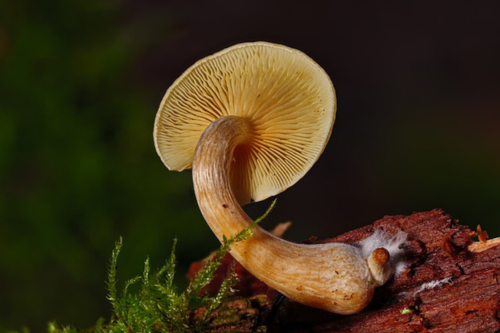Mushroom-Derived Materials Hold Promise for Providing Benefits to Developing Nations in Africa
A research team from the University of Bristol has suggested that mycelium composites could offer a sustainable alternative to traditional building materials and help address socio-economic and environmental challenges in Africa.
In a new paper published in the journal Advanced Sustainable Systems, Lead Author Stefania Akromah, a PhD student in the Centre for Doctoral Training in Composites Science, Engineering, and Manufacturing, suggests that while holding a lot of potential benefits, mycelium composite technology has yet to become established in the African continent.
Mycelium composites are a class of materials based on mycelium – the roots of mushrooms. These versatile materials, which have gained popularity in Europe and the US in the past decade, are produced by harnessing the ability of fungi to grow by feeding on organic biomass – eliminating the need for high-end manufacturing processes. In fact, mycelium composites can be grown almost anywhere – even at home – without the need for extensive expertise or advanced equipment.
The organic biomass used for the basis of mycelium composites are often obtained from agricultural, agro-industrial, and forestry waste streams. There is a wide range of applications for mycelium composites, including packaging materials, insulation panels, floor tiles, and furniture.
Mycelium composites are also envisioned as the ‘next-generation of self-healing and self-growing’ structures in construction. This can be achieved due to the ability of fungi to respond to light, chemicals, gases, gravity, electric fields, and mechanical cues.
Lead author Stefania Akromah said: “I am very intrigued by how such a simple technology holds so much potential for the African continent, and I am happy that my contribution could make a difference in the lives of my people.”
Stefania’s paper suggests mycelium composites can add value to agricultural waste, potentially offering an incentive for investment in the agricultural sector and increasing productivity. Mycelium composite production could also serve as a greener waste management route not only for agricultural waste, but for plastics and other carbon-based waste materials too.
The next step for the authors is to fine-tune the properties and production of mycelium composites in order to facilitate the integration of this technology with well-established practices in diverse developing countries.
Dr Neha Chandarana, Lecturer in Sustainable Composite Materials, said: “I’m really grateful to be working alongside Stefania and Professor Steve Eichorn on this project. We’re seeing quite a lot of activity in mycelium composites at the moment, and I’m looking forward to the next steps of our project that will address the development of structural mycelium-based materials as well as considering the social and environmental impacts.”
Professor Steve Eichhorn, Professor of Materials Science and Engineering, added: “I learned so much in writing this review with Stefania and Neha, both about the possibilities for cheap, lightweight and sustainable composites from mycelium, but also how these might be deployed in African countries.”

